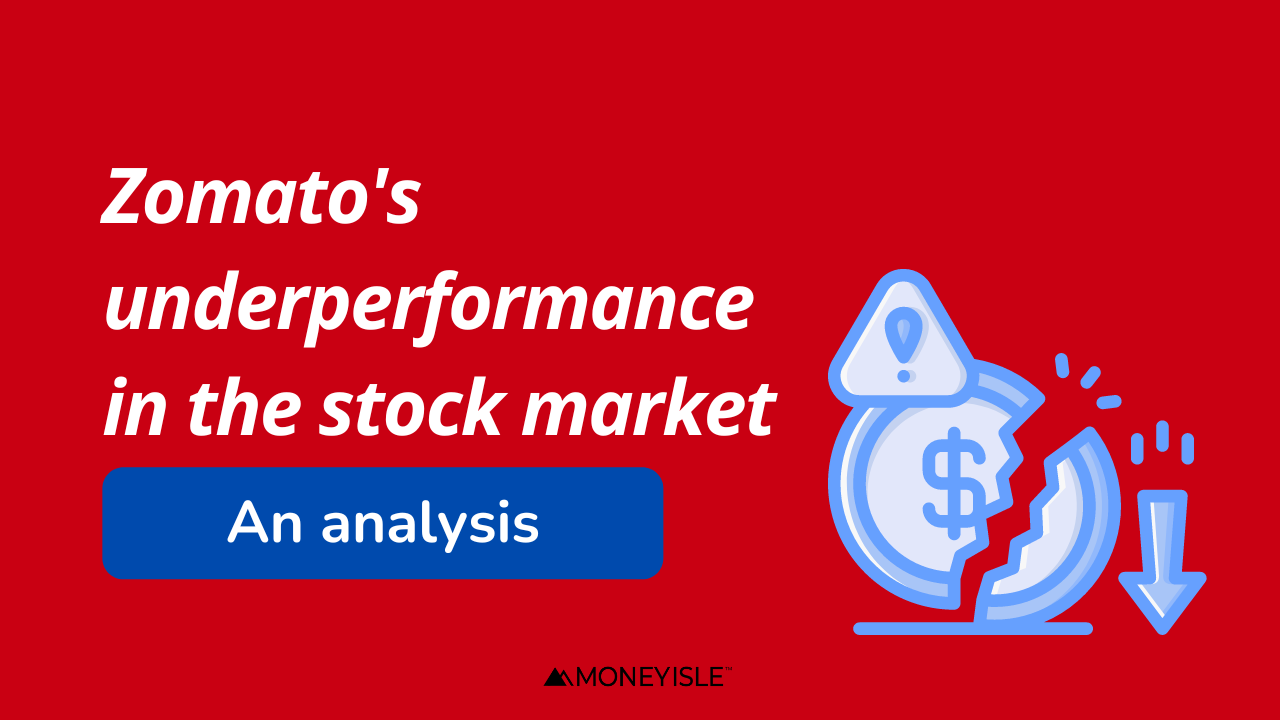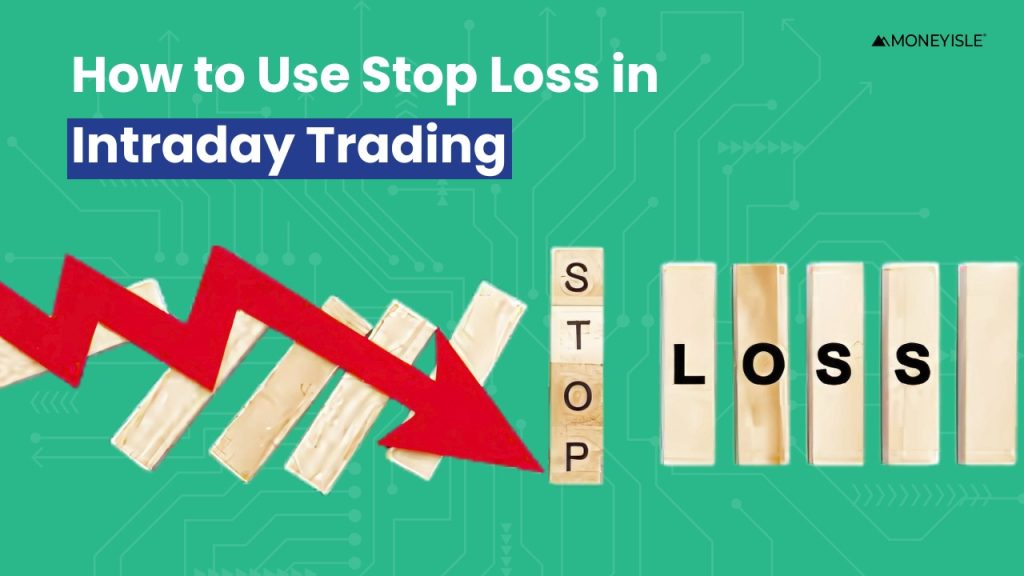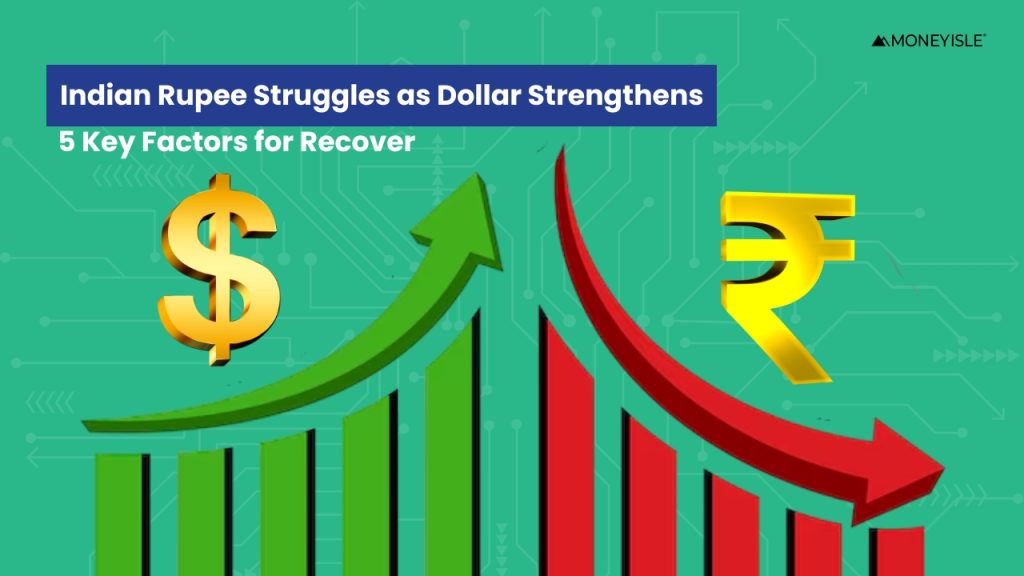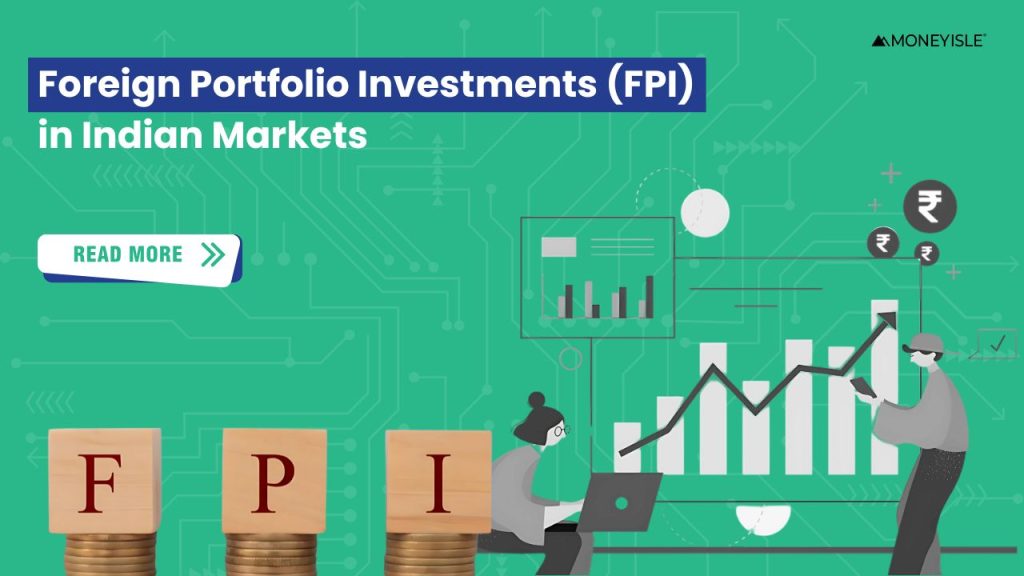The shares of Zomato had a spectacular launch on the local market.
A large number of investors were ready to place large bets on new-age technology businesses that exhibited the hallmarks of a revolutionary business model.
On April 28, 2021, the food delivery website, Zomato, filed its Draft Red Herring Prospectus (DRHP) with the market regulator, the Securities and Exchange Board of India (SEBI).
With such a grand preparation and so much hype, why did the Zomato stocks underperform?
Well, let’s try to understand.
The Initiation of the Zomato IPO
According to the DRHP filed by Zomato, the business intends to issue equity shares worth up to ₹8,250 crores in an initial public offering. Of this, ₹7,500 crores will be raised via a new public offering, while ₹750 crores will be raised through an offer for sale to the current investors.
As of July 23, 2021, the shares of the food company opened at ₹116, representing a 53 percent premium over the initial public offering price of ₹76.
At a point, Zomato shares were trading at the day’s high of 134.70, up 77.63 percent on the BSE, and at 135.60, up 77.57 percent on the NSE, both of which were record highs.
The initial public offering (IPO) of the online meal delivery company is the second biggest IPO in history, behind only the ₹15,199 Crore Coal India shares sale that took place back in October 2010. It is also the first non-foreign mega-startup to go public on the stock exchange. Here are a few of the most important financial and risk factors that the online food ordering platform identified in their DRHP.
Zomato is, in its principals though, a loss-making company and has a record of net losses dating back to the fiscal years FY18 to FY20, and the company reported a net loss of Rs 682 crore for the nine months ending December 31, 2020. The firm said that it has a history of incurring net losses and that it expects to incur further expenditures in the future.
What fueled the Zomato share collapse?
COVID-19 has been wreaking havoc on companies all around the world. A similar public health issue might have a negative influence on the company’s cash flows, financial situation, and results of operations, among other things.
The firm said that if it is unable to continue to deliver solutions to its restaurant partners or to follow its plan of allowing additional restaurants onto its platform.
With the impact on the business, a decrease in cash flow, and prospects being impacted, the stock price further receded.
More importantly, the “strong competition” in food delivery and other industries definitely didn’t help as well.
Current Situation of Zomato Shares
The stock markets in the United States and India are in a downward trend.
While this is not the case with Zomato specifically, practically all of the freshly listed technology firms have suffered a similar plight.
Paytm, Nykaa, PB Fintech, and CarTrade are just a few examples.
These new-age technology companies took a significant blow during the recent corrections that coincided with the worldwide sell-off. Many market analysts believe that these companies were overpriced at the time of their initial public offering (IPO), which is one of the primary causes for their underperformance.
The shares of Zomato declined the highest out of this group. It has plummeted below the price at which it was listed, which was around ₹116.
Currently, the stock is trading about ₹85 per share as of February 2022. Let’s attempt to get a better understanding of the firm so that you, as an investor, can make an educated choice on whether to purchase or sell the shares.
What is causing Zomato’s stock price to be corrected?
The Indian stock markets are on a downward trend. Despite some signs of recovery in the markets, investors in technology companies are selling off their holdings in other stock markets, not only in India.
This is in response to the likelihood of more rate rises, which makes it one of the primary causes for the decline in the value of Zomato’s stock.
Aside from this, there are a number of additional reasons that might contribute to the stock’s drop. Due to intense competition from other competitors such as Swiggy, restaurant operations, and the high value of the shares, the stock is now trading at a loss.
However, since Zomato is backed by significant finance, a burgeoning delivery business, and a well-established brand, forming partnerships with restaurants is simpler, resulting in greater market share growth. Many experts are split on the appropriate stock value for the company.
Zomato is still doing well…
Following our understanding of whatever may be the case that works for Zomato’s stock price, let’s take a closer look at the company’s operations to get a more comprehensive perspective.
Zomato is in the meal delivery industry, and it serves as a conduit between customers and eateries. It receives commissions from the restaurants for 90 percent of the money generated by this sector.
It also generates income via advertisements (both inside and outside of the app) and pro membership fees that build up a very small fraction of the revenue.
At the moment, Zomato works in a practically duopoly market, with Swiggy serving as the company’s other major rival. Considering that not all of the nation has yet been connected to the internet, there is space for growth.
Recently, Zomato decided to launch its Buy-Now-Pay-Later payment method, which is supposed to retain its existing customers. Zomato had informed the stock exchanges that it will be setting up its own NBFC (non-banking financial company).
So far, Zomato has been using BNPL platforms like LazyPay, Simply and ZestMoney to allow the customers to pay at their convenience and not be bothered by bills every time they decide to order or dine at a restaurant.
Reasons why Zomato is very well positioned to grow its market shares
The growth of Zomato is dependent on the number of clients. That is the number of active users and the amount of money they spend.
On this front, the corporation has been making steady progress for some time. Its average monthly transactional users climbed from 6 million during the July to September quarter of 2021 to 15.5 million during the same quarter last year, representing a 35% growth in one year.
Around September 2021, the total number of active users reached 59 million. This has also been slowly growing over time. According to numerous statistics, the internet penetration rate is increasing, and this category is expected to develop in the future.
As a result, Zomato benefits as well.
The easing of lockdown and control constraints has resulted in significant benefits for the firm. The order number of food deliveries has been increasing in recent years. During the July to September quarter of 2021, Zomato’s gross order value increased by 158 percent, reaching Rs 72.1 crore.
According to the company’s management, the rise in the number of transactional users, the number of available food delivery businesses, and the number of delivery partners were all factors in the expansion. With so many people preferring the comfort of their own homes, the delivery sector is sure to grow.
Additionally, the fact that many people are attempting to access high-quality eateries online bodes well for the company’s future development as well. There is room for expansion and diversity.
The future
In Zomato’s case, analysts say the route to profitability looks to have become longer, but solid execution in the core business and initiatives to achieve positive contribution margins could help the company speed its progress.
According to their estimates, the stock’s price might rise as high as ₹155, representing an increase of up to 81 percent over the previous day’s low of ₹85.85.
Investments in rapid grocery commerce offer up another significant possibility, however, they will need a significant expenditure in the near term, according to the experts.
Kotak Institutional Equities believes that the stock is worth ₹135 a share. It pointed out that Zomato’s sales growth of 82 percent year on year was impressive, with online food GOV growth of 85 percent leading the way.
The business posted a combined net loss of ₹67.2 crores for the December quarter on Thursday, a significant decrease from the ₹352.6 crores recorded in the same period the previous year. The company’s revenue from operations reached ₹1,112 crores, an increase of 82.47 percent over the previous year’s figure of ₹609.4 crores.
The company’s revenue from operations reached ₹1,112 crores, an increase of 82.47 percent over the previous year’s figure of ₹609.4 crores.
With such figures and the introduction of new features regularly, Zomato seems to have a bright future. While Zomato is mostly known for its meal delivery services, the firm has been growing, albeit at a modest rate, in recent years. It provides grocery delivery services as well as B2B sectors where the firm provides meat and vegetables as well as storage services.











